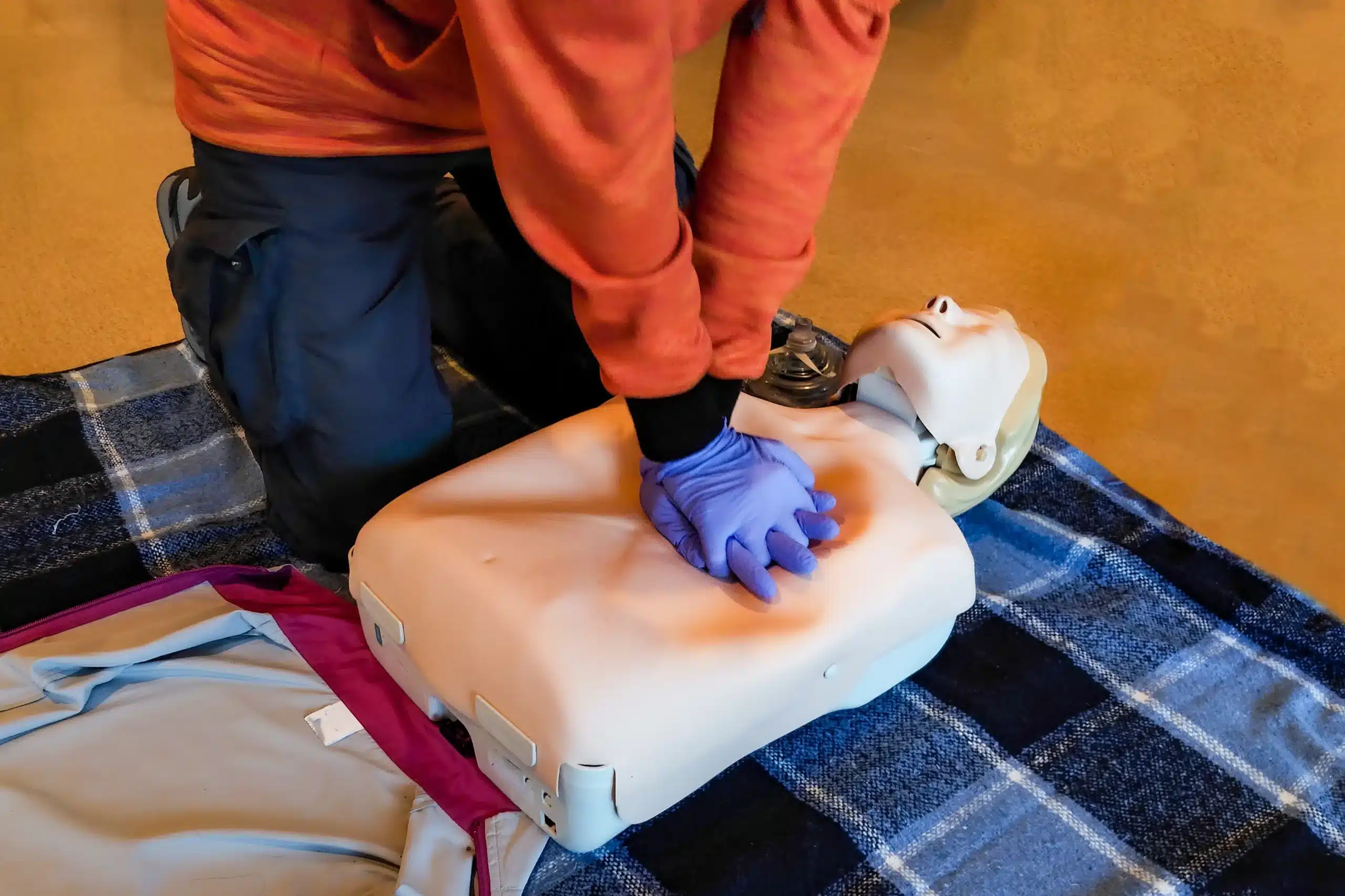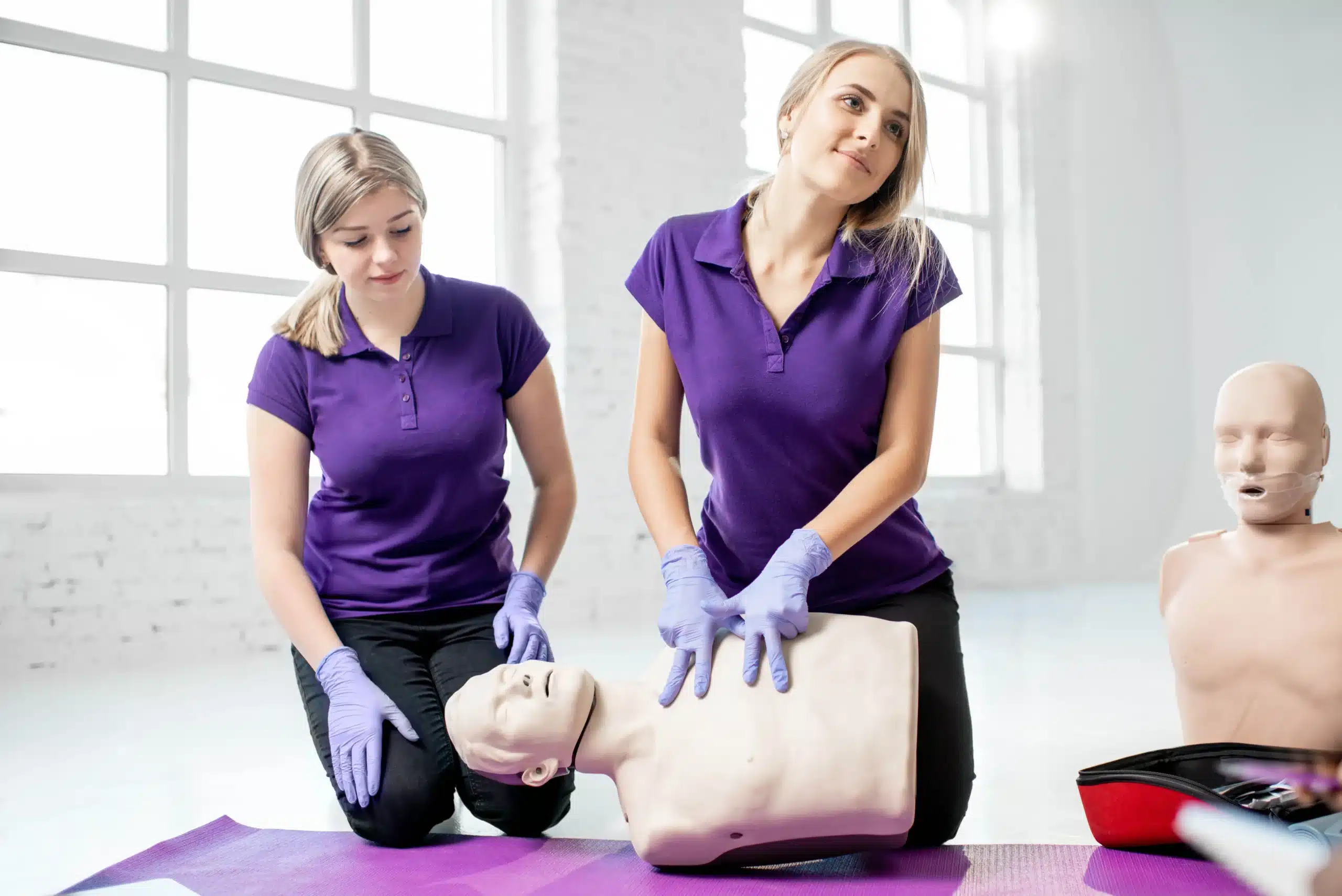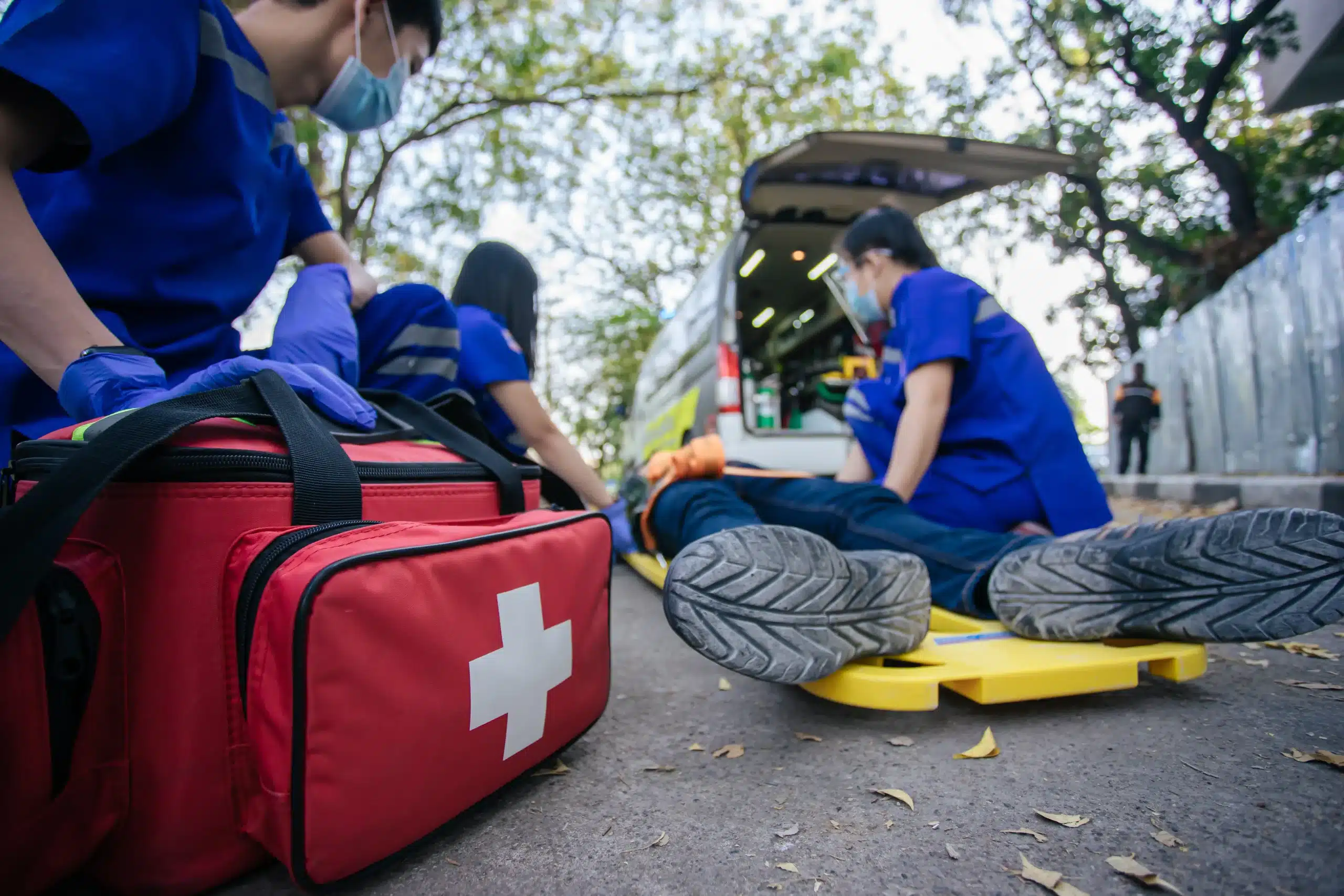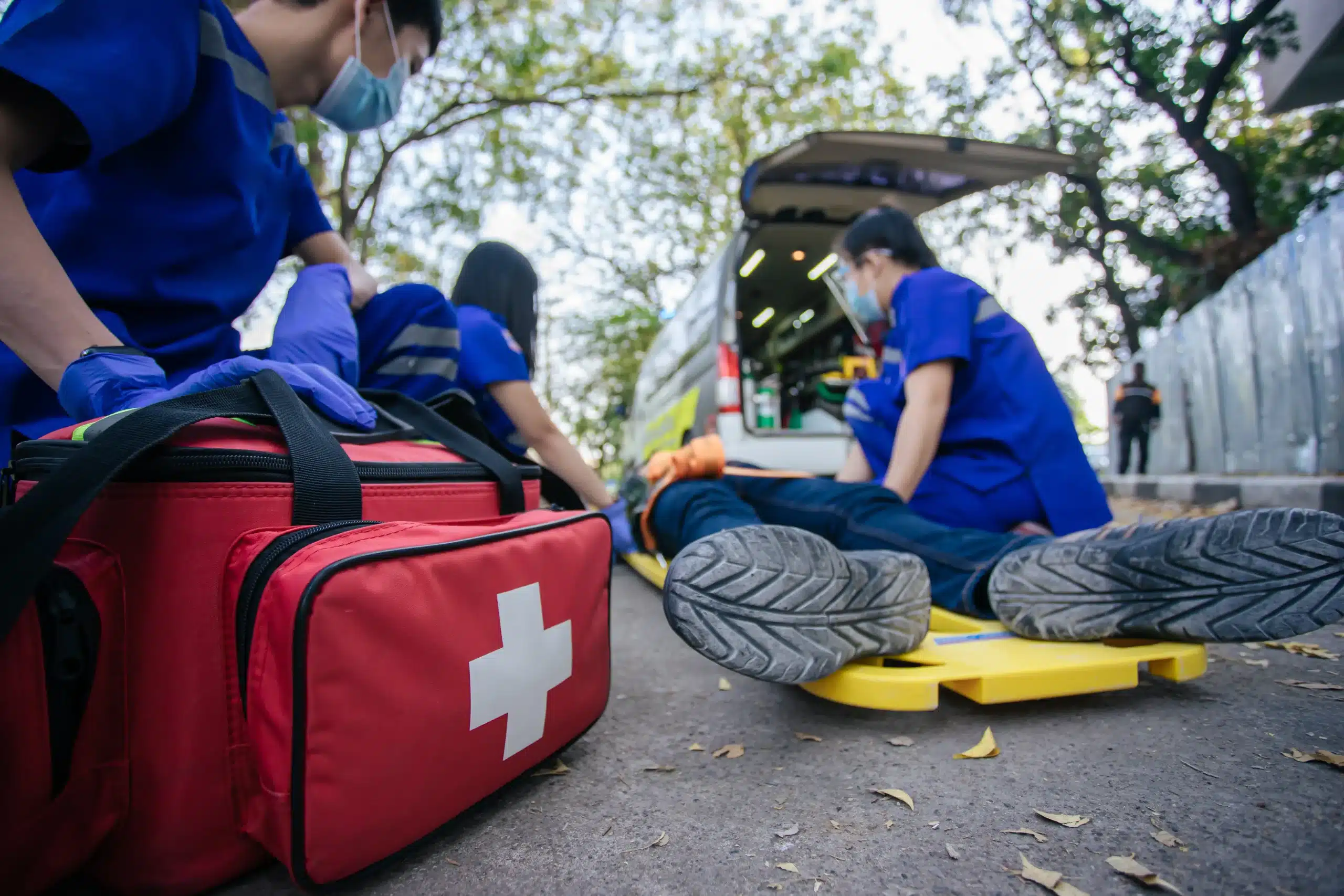When it comes to the safety and well-being of children, being prepared for the unexpected is key. Accidents happen, and knowing how to respond in a medical emergency can be life-saving. Pediatric CPR and First Aid courses provide the essential skills and knowledge to handle a range of situations, giving you the confidence to act quickly and effectively. If you’ve been searching for “Pediatric CPR and First-aid courses near me,” this article will provide valuable insights into what these courses entail, where to find them, and why they’re so important for anyone who works with or cares for children.
Key Takeaways
- Be prepared for pediatric emergencies: Equipping yourself with CPR and First Aid skills empowers you to respond effectively to a range of situations, from minor injuries to life-threatening events.
- Find a course that fits your needs: Explore various options, including in-person, online, and blended learning formats, to find a course that aligns with your schedule and preferred learning style. Consider reputable providers like the American Red Cross, American Heart Association, or local community centers.
- Build confidence and contribute to a safer community: Learning these essential skills not only prepares you for emergencies but also creates a network of support for children. Take the initiative to become trained and make a difference.
What is Pediatric CPR & First Aid?
Pediatric CPR and First Aid classes teach you how to respond to emergencies involving infants and children. These courses cover a range of life-saving skills, from CPR and choking management to treating burns and recognizing seizures. With this training, you’ll gain the confidence to act quickly and effectively in a crisis. Pediatric First Aid courses often include basic life support skills like CPR but also cover injuries and illnesses specific to kids, such as recognizing signs of dehydration or managing a fever. Knowing how to handle these common childhood ailments can make all the difference while you wait for professional medical help.
Why These Skills Are Crucial for Child Safety
As parents, caregivers, or anyone who works with children, having Pediatric CPR and First Aid training is essential. Kids are naturally curious and active, which unfortunately means accidents and unexpected situations are bound to happen. A child could choke on a small toy, experience a sudden allergic reaction, or suffer a fall. In these critical moments, knowing how to respond can prevent a minor incident from becoming a serious emergency. Pediatric First Aid and CPR skills empower you to provide immediate care, stabilizing a child until professional help arrives. While it’s understandable to feel some hesitation about learning CPR, hands-on classes with training mannequins help you build the confidence and muscle memory to perform compressions effectively. Learning these skills isn’t just about responding to emergencies; it’s about creating a safer environment for the children in your life.
Find Pediatric CPR & First Aid Courses Near You
Ready to learn how to respond to pediatric emergencies? Several organizations offer training courses. Choosing a reputable provider that follows current guidelines is essential. Here are some places to explore:
Santa Clara CPR Classes
Santa Clara CPR Classes offers various American Heart Association certification courses, including CPR, First Aid, BLS, ACLS, and PALS. They focus on convenient schedules, easy registration, and daily availability in Santa Clara and surrounding cities like Milpitas and San Jose. Their commitment to customer service and a low-price guarantee make them a great option.
American Red Cross
The American Red Cross is a well-known provider of health and safety training. They offer various pediatric CPR and first aid courses, both in-person and online. Check their website for classes near you. Many local chapters offer flexible scheduling.
American Heart Association
The American Heart Association provides numerous resources and courses for CPR and first aid training. Their Heartsaver Pediatric First Aid CPR AED course is designed for those who work with children. You can search their website for certified instructors and training centers in your area. These courses cover essential skills for responding to emergencies involving children.
Health and Safety Institute (HSI)
HSI offers a comprehensive selection of safety training programs, including pediatric CPR and first aid. They provide training materials and resources for individuals and organizations. Find HSI-authorized training centers through their website. Their hands-on classes often use CPR training mannequins for realistic practice.
Local Community Colleges
Many community colleges offer CPR and first aid certification courses, often at a lower cost than private providers. Check with your local community college for course availability and schedules. These courses frequently align with American Heart Association guidelines, teaching the same science-based skills.
Hospitals and Medical Centers
Hospitals and medical centers frequently hold CPR and first aid training sessions for their staff and the community. Contact your local hospitals or check their websites for upcoming courses. These courses are often taught by experienced medical professionals and can address common misconceptions about first aid.
What Will You Learn in a Pediatric CPR & First Aid Course?
Pediatric CPR and First Aid courses empower you to respond confidently to emergencies involving infants and children. These courses cover essential skills, providing both knowledge and practical training. Let’s explore the key areas covered:
Infant and Child CPR Techniques
This section focuses on the specific techniques for performing CPR on infants and children. You’ll learn how to assess a child’s responsiveness and breathing, and how to deliver chest compressions and rescue breaths. In a hands-on class, you’ll use a CPR training mannequin to learn exactly where and how hard to press for effective chest compressions. This practice builds muscle memory and confidence in providing life-saving assistance.
Choking Management
Choking is a common hazard for young children. This part of the course teaches you how to recognize the signs of choking and how to perform appropriate rescue techniques. You’ll learn back blows and chest thrusts for infants, and abdominal thrusts (the Heimlich maneuver) for children. Pediatric First Aid courses typically cover these essential skills, giving you the tools to act quickly.
Allergic Reaction Response
Allergic reactions can range from mild skin irritations to severe, life-threatening anaphylaxis. This section covers common pediatric allergens, how to recognize the signs and symptoms of a reaction, and how to administer an epinephrine auto-injector (like an EpiPen). The Heartsaver Pediatric First Aid CPR AED course trains participants to manage injuries in the first few minutes until professional help arrives.
Burn and Scald Treatment
Burns and scalds are another frequent childhood injury. You’ll learn how to assess the severity of a burn, cool and dress it properly, and when to seek professional medical attention. Pediatric CPR and First Aid training equips you to handle these emergencies, providing the skills to respond effectively.
Seizure Recognition and Response
Seizures can be frightening, especially in children. This section teaches you how to recognize the signs, protect the child from injury during a seizure, and when to call for emergency medical assistance. The Heartsaver course uses science and education from the American Heart Association Guidelines, ensuring up-to-date training.
Handling Common Pediatric Emergencies
Beyond the specific topics above, Pediatric First Aid courses also cover other common childhood emergencies. These may include:
- Fever management
- Head injuries
- Poisoning
- Fractures and sprains
- Nosebleeds
These courses provide the skills to respond effectively to various situations, giving you confidence and peace of mind.
Course Costs & Financial Aid
Knowing the cost of pediatric CPR and first-aid training and available financial assistance can help you plan. Let’s break down the typical expenses and potential ways to save.
Average Price Range
Pediatric CPR and first-aid course costs vary depending on several factors. These include the type of course, your location, the training organization, and whether you choose individual or group instruction. Expect to see prices ranging from $70 to $100+ per person for individual courses. Group discounts are often available, making it a more economical choice for families, community groups, or workplaces. Contacting your chosen training provider directly, such as Santa Clara CPR Classes, is always the best way to get accurate pricing and learn about their low-price guarantee.
Discounts and Promotions
Many organizations offer discounts and promotions. Check with national organizations like the American Red Cross and the American Heart Association for potential savings. Local training providers, like Santa Clara CPR Classes, may also have periodic specials or discounts for groups, students, or returning customers. It’s always a good idea to ask about any current promotions when you register.
Financial Assistance Options
While cost shouldn’t prevent you from learning these lifesaving skills, financial assistance may be available. Some organizations offer scholarships or reduced fees based on need. Additionally, check with your employer or professional organization. They may offer subsidies for training or have partnerships with training providers. Remember, even if a course has online components, in-person skills sessions are typically required for certification. This ensures you have the hands-on practice necessary to respond effectively in a real-life emergency.
Register for a Pediatric CPR & First Aid Course
Knowing how to respond to a medical emergency involving a child can be life-saving. This section breaks down the steps to enroll in a Pediatric CPR and First Aid course and what to expect.
Step-by-Step Enrollment
Finding the right course is the first step. Look for classes offered by trusted providers like the American Heart Association or the American Red Cross. Many local hospitals and community centers also offer these courses. Once you’ve found a provider, check their website or give them a call to see their schedule. Most providers offer online registration, making it easy to sign up. You’ll typically need to provide some basic information and pay the course fee. Don’t hesitate to reach out to the provider if you have any questions—they’re there to help! At Santa Clara CPR Classes, we offer a variety of courses, including Pediatric First Aid, CPR, and AED training.
Prerequisites and Requirements
Generally, there aren’t any strict prerequisites for taking a Pediatric CPR and First Aid course. These courses are designed for people of all backgrounds, from parents and caregivers to teachers and coaches. The key requirement is a willingness to learn and practice. In a hands-on class, you’ll use a CPR training mannequin to practice compressions. This practical experience is invaluable for building confidence.
Age Restrictions
While anyone can benefit from learning Pediatric CPR and First Aid, certain courses may have age recommendations. For example, the American Heart Association’s Heartsaver Pediatric First Aid CPR AED Course is geared towards individuals involved in childcare. However, there isn’t typically a minimum age requirement. If you’re unsure about age restrictions for a specific course, it’s always best to check with the provider. They can clarify any age recommendations and help you find the most appropriate course.
Certification & Renewal
Validity Period
After completing your Pediatric First Aid CPR AED course, you’ll receive a certification card valid for two years. The American Heart Association offers courses focused on equipping you with the skills to manage illnesses and injuries in children and infants until professional help arrives. A current certification gives you the confidence to act quickly in emergencies.
Renewal Requirements
As your certification nears expiration, you’ll need a renewal course. Pediatric first-aid and CPR courses following American Heart Association guidelines cover the same fundamental skills, regardless of where you initially trained or the course format. Contact your training provider, such as Santa Clara CPR Classes, for renewal options.
Keeping Your Skills Current
Even with a valid certification, consider refreshing your skills periodically. Regular practice helps overcome common concerns about performing CPR or hesitating to provide aid. Refresher courses or practice sessions empower you to act decisively in emergencies. Staying current with your training ensures you’re always prepared to help a child in need.
Choose the Right Course Format
Deciding on the right course format depends on your learning style, schedule, and preferences. Let’s explore the pros and cons of each option to help you make the best choice for your Pediatric CPR and First Aid training.
In-Person vs. Online
In-person classes offer hands-on practice and direct interaction with a certified instructor. You’ll work with CPR training mannequins, giving you the chance to physically perform chest compressions and practice other essential skills. This practical experience builds confidence and competence for real-life emergencies. However, in-person classes require a fixed schedule, which might not be ideal for everyone. If you learn best by doing and value face-to-face instruction, an in-person class might be the right fit.
Online courses provide flexibility, allowing you to learn at your own pace and from anywhere with an internet connection. This format is perfect for busy parents, caregivers, or anyone with a packed schedule. Keep in mind that many online courses, including the Heartsaver® Pediatric First Aid CPR AED, often require an in-person skills session to receive full certification. This blended approach lets you study the material conveniently online and then demonstrate your skills in person.
Blended Learning
Blended learning combines online learning with in-person skills practice. You’ll cover the theoretical knowledge online at your own speed, then attend an in-person session to demonstrate your skills and receive certification. This approach offers the convenience of online learning and the hands-on experience of a traditional classroom. Blended learning is an excellent option for those who want a flexible learning experience with the benefit of instructor guidance. The Heartsaver® Pediatric First Aid CPR AED course often uses this format, making it accessible and comprehensive for those working in childcare or frequently interacting with children. If you prefer a mix of online convenience and in-person interaction, blended learning could be your best bet.
Common Misconceptions About Pediatric CPR & First Aid
Knowing how to respond to a medical emergency involving a child is a valuable skill for anyone. Unfortunately, some common misconceptions prevent people from getting pediatric CPR and first-aid training. Let’s clear up a few of these misunderstandings.
“Only Medical Professionals Need Training”
It’s easy to assume that CPR and first aid are only necessary for doctors and nurses. But emergencies can happen anywhere, and often, the first person on the scene isn’t a medical professional. Parents, caregivers, teachers, coaches—anyone who spends time with children—benefits from having these skills. Learning CPR empowers you to confidently and effectively respond when a child needs it most. CPR and first-aid certification courses are available for anyone who wants to be prepared.
“CPR is Too Complicated to Learn”
Some people worry that CPR training is too complex or that they might do something wrong. The truth is, CPR techniques are designed to be easy to learn, and classes make the process straightforward. The ability to perform even basic CPR can make a life-or-death difference, so don’t let concerns about difficulty hold you back. Check with your local organizations, such as community centers or hospitals, for upcoming CPR training dates.
“First Aid Replaces Professional Medical Care”
First aid is a critical initial response in emergencies, but it’s not a substitute for professional medical attention. Think of first aid as a bridge: it helps stabilize a child until paramedics or other healthcare providers arrive. Knowing first aid can help you manage the situation and potentially minimize harm, but it’s essential to get professional medical help as quickly as possible. After administering first aid, always seek appropriate medical care from qualified professionals.
Build Confidence with Pediatric CPR & First Aid Training
Knowing how to respond to a medical emergency involving a child can make all the difference. Pediatric CPR and First Aid training gives you the skills and confidence to act quickly and effectively in such situations. It empowers you to provide immediate care, potentially stabilizing a child until professional medical help arrives.
Respond Quickly in Emergencies
Pediatric emergencies can happen anytime, anywhere. A child could choke on a piece of food at a restaurant, experience an allergic reaction at a park, or suffer a sudden injury at home. Pediatric CPR and First Aid training equips you with the knowledge and skills to respond swiftly and appropriately in these critical moments. Instead of feeling helpless or panicked, you’ll be prepared to assess the situation, provide initial care, and potentially save a life. This preparedness brings a sense of control and confidence, allowing you to act decisively when seconds count.
Handle Common Pediatric Emergencies
From minor cuts and scrapes to more serious situations like choking or allergic reactions, children are prone to a variety of medical emergencies. Pediatric First Aid and CPR courses cover a wide range of these emergencies, teaching you how to recognize the signs and symptoms and administer appropriate first aid. You’ll learn essential techniques like CPR for infants and children, how to clear a blocked airway, and how to manage burns, scalds, and seizures. This comprehensive training ensures you’re well-prepared to handle various situations, boosting your confidence and reducing the fear of the unknown.
Create a Safer Community
By learning Pediatric CPR and First Aid, you not only gain personal confidence but also contribute to a safer community for all children. When more people are trained in these life-saving skills, children have a greater chance of receiving immediate care in an emergency. The Heartsaver Pediatric First Aid CPR AED course, for example, emphasizes the importance of early intervention. This collective preparedness creates a network of support, ensuring that children are surrounded by individuals capable of providing assistance when needed. Becoming trained is a proactive step towards building a more secure environment for children. Contact Santa Clara CPR Classes to learn more about our course offerings.
Compare Local Courses
Finding the right pediatric CPR and first-aid class involves a little research. Don’t just grab the first available class—take the time to compare a few options to find the best fit for you.
Use Online Course Locators
Start by using online course locators. Sites like the American Heart Association and the American Red Cross offer search tools to pinpoint classes near you. These platforms often let you filter by course type (CPR, first-aid, or a combination), dates, and times, making it easier to find a class that works with your schedule. You can also check with local community colleges, hospitals, and community centers, as they frequently offer these courses too.
Evaluate Courses and Instructors
Once you’ve found a few potential courses, take a closer look at what each offers. It’s smart to choose a course based on recognized guidelines, such as those from the American Heart Association. This ensures consistent, high-quality training no matter where you take the class. If you’re nervous about performing CPR correctly, look for a course that emphasizes hands-on practice and offers plenty of opportunities to ask questions. A comfortable learning environment can make a big difference in your confidence level. Reading reviews or asking for recommendations can also give you a sense of the instructor’s teaching style and the overall course experience. Don’t hesitate to contact us if you have questions about our pediatric CPR and first-aid classes. We’re happy to help you find the perfect fit.
Related Articles
- Pediatric CPR & First Aid Training in San Jose – Santa Clara CPR Classes
- CPR Classes for Parents in Santa Clara: Your Guide – Santa Clara CPR Classes
- CPR Training for School Staff in Santa Clara – Santa Clara CPR Classes
- Pediatric Advanced Life Support (PALS) Courses in Milpitas – Santa Clara CPR Classes
- Why CPR Matters in Healthcare
Frequently Asked Questions
What’s the difference between Pediatric First Aid and CPR?
Pediatric First Aid focuses on treating a wide range of childhood injuries and illnesses, from minor cuts and burns to recognizing signs of dehydration or fever. Pediatric CPR, on the other hand, specifically teaches you how to perform cardiopulmonary resuscitation for infants and children. Often, these two skillsets are taught together in a combined course.
How often do I need to renew my Pediatric CPR and First Aid certification?
Certification is typically valid for two years. To keep your skills current and maintain your certification, you’ll need to take a renewal course before your current certification expires.
I’m nervous about performing CPR. Are the techniques difficult to learn?
CPR techniques are designed to be straightforward, and certified instructors guide you through each step. Hands-on practice with training mannequins helps build muscle memory and confidence. Don’t let nerves hold you back – even basic CPR can save a life.
Are online Pediatric CPR and First Aid courses as effective as in-person classes?
Many online courses require an in-person skills session for certification. This blended approach allows for flexible online learning combined with the essential hands-on practice and instructor feedback you get in a traditional classroom setting.
Where can I find Pediatric CPR and First Aid classes near me?
Several organizations offer these courses, including the American Red Cross, American Heart Association, and local hospitals and community centers. Online course locators can help you find classes in your area based on your schedule and preferred format. You can also contact Santa Clara CPR Classes directly for information on their course offerings.





